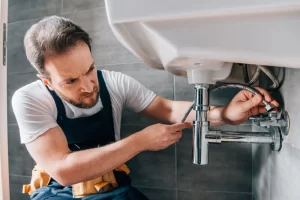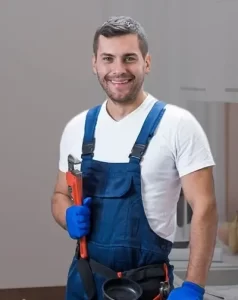Burst Water Pipe at Home
A burst water pipe at home is one of the most frustrating and potentially damaging issues a homeowner can face. When a water pipe bursts, water can quickly spread, causing damage to floors, walls, ceilings, and personal belongings. Knowing how to respond immediately to a burst water pipe at home can help minimize damage and lead to faster, more cost-effective repairs.
Shut Off the Water Supply
The first and most crucial step when you discover a broken pipe is to turn off the water supply. This will halt the flow of water and help avoid additional flooding. In most homes, the main shut-off valve is located near the water meter, typically in the basement, crawl space, or on an exterior wall.
After turning off the main water supply, open all the faucets in your home, including the highest and lowest flow faucets, to help drain any remaining water from the pipes. This step ensures that no more water escapes from the broken pipe and can also reduce the pressure in the system, preventing further damage if there is another vulnerable point in the plumbing system.
How to Locate a Burst Water Pipe at Home
Once the water is turned off, it’s time to locate the broken pipe. Often the break is obvious, with water pooling in one area, but sometimes the damage can be less visible, such as a crack behind walls or under floors. Check areas where pipes are most vulnerable, such as basements, crawl spaces, or exterior walls, especially during cold weather. If the water is concealed, you may have to remove portions of the walls or ceiling to thoroughly assess the damage. If you’re not sure where the leak is coming from or if it’s difficult to access, calling a professional plumber may be your best option.
Minimizing Water Damage
While waiting for a plumber to arrive or preparing to fix the broken pipe yourself, try to minimize water loss. If the leak is large, use towels, buckets, or a wet/dry vacuum to absorb as much water as you can. Move valuables out of the area to prevent damage. If the leak is in a wall or ceiling, place a large container, such as a trash can or basin, under the pipe to catch the dripping water. For larger leaks, you may need to use plastic sheeting or tarps to contain the water.
Call a professional plumber
If you’re not sure how to repair a broken pipe or if the damage is extensive, calling a professional plumber is always a good idea. Plumbers have the experience and tools to repair or replace a broken pipe. It’s crucial to act quickly; waiting too long to repair the damage could lead to more serious water damage, mold growth, and structural problems in your home.

Preventing Future Leaks
Once the immediate damage has been repaired, you should take steps to prevent future pipe bursts. Insulating pipes in areas prone to freezing, like attics or basements, can help protect them from freezing and bursting during cold weather. Regularly check pipes for signs of wear, such as cracks or corrosion, and replace old or damaged sections before they burst. Installing a water leak detection system can also help you detect leaks early, preventing them from becoming emergencies.
Final Thoughts On Handling a Burst Water Pipe
Bursted Water Pipe at Home is certainly a stressful experience, but with timely intervention, you can minimize the damage and avoid costly repairs. Remember to act quickly by turning off the water, draining the pipes, containing the water, and contacting a professional plumber.
Call Emergency Plumber in Reading. After your call, we send immediately a professional plumber to fix the issue.
Furthermore, we are 24 hours available.

